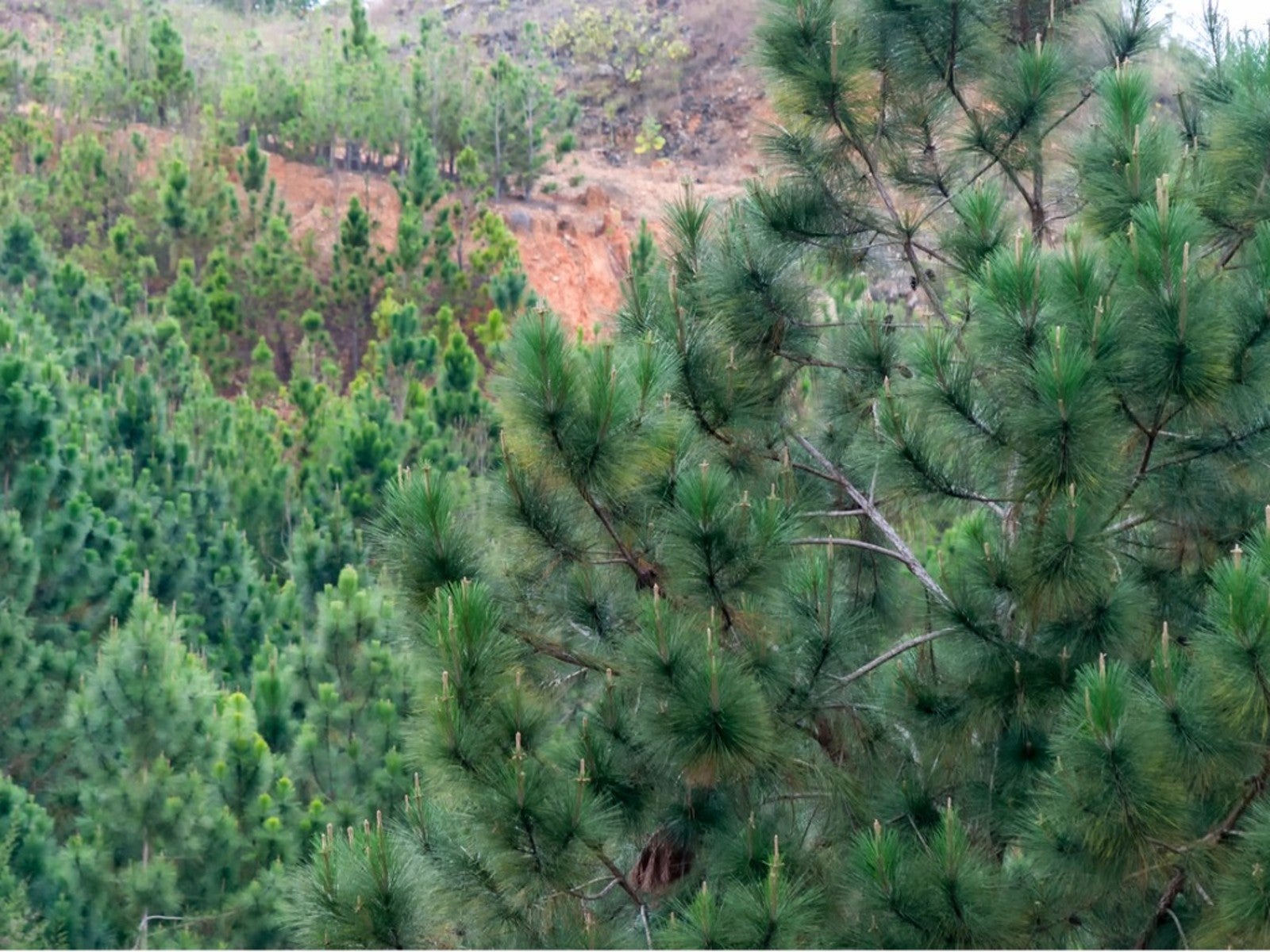Caribbean Pine Tree Info


If you’ve never heard of Caribbean pine (Pinus caribaea), you probably don't live in the tropics off the coast of Mexico or the American Southeast. In these locations, the Caribbean pine is known as an important timber tree and a useful tree to combat erosion. If you are interested in learning something about this tall, fast-growing conifer, read on.
Note: This tree is classified as an invasive species and causes problems to natural habitats in many countries.
Meet the Caribbean Pine
The Caribbean pine is an evergreen conifer that grows rapidly, yet produces wood that is strong enough for use as timber. Native to Central America, it grows in the wild in the tropics from Nicaragua to Mexico, and in the Caribbean region as well as the Bahamas. It prefers low level plains and smaller hillsides from sea level to 2,000 feet (600 m).
This pine grows to mature heights of 65 to 100 feet (20 to 30 m), sometimes even taller. Each tree has a single trunk -- straight, slender and erect. The trunks can grow up to 40 inches (1 m) in diameter measured at breast height. The irregular crown comprises almost a third of the tree height when the tree matures.
Caribbean Pine Wood
Caribbean pine has been grown and harvested as timber for centuries. The heartwood can be golden or reddish brown with a wide band of sapwood. The grain is straight, and the wood texture ranges from medium to coarse. The wood is moderately light in weight, but trees from natural stands grow more slowly and have a higher density.
Given the low timber density, Caribbean pine wood is judged inappropriate for structural work or even furniture. It is used for shutters and packaging, as well as toys, interior trim, veneer, plywood, piles, vats, and particle boards.
Pinus Caribaea Seeds
The Caribbean pine scientific name is Pinus caribbea, or Pinus caribaea var. Hondurensis. That’s why the seeds are often referred to as Pinus caribaea seeds. They are produced in seed cones less than 2 inches (5 cm) long that grow in pairs or even whorls of up to five cones. It takes two years for them to mature, each one releasing between 100 and 200 dark seeds.
Sign up for the Gardening Know How newsletter today and receive a free copy of our e-book "How to Grow Delicious Tomatoes".
These Pinus caribaea seeds are edible. Indigenous peoples consume them raw as well as cooked. In addition, oil squeezed from the tree's leaves has been used for medicinal baths, and turpentine obtained from the resin has been used as a remedy for kidney and bladder issues, as well as coughs, colds, influenza and tuberculosis.
How to Care for a Pinus Caribaea
Pinus caribaea is first and foremost a tropical plant. It requires sunshine and generous amounts of water to thrive. This conifer should only be planted in frost-free areas with good drainage and a high level of annual rainfall. Seasonal flooding is not an issue, nor are salt winds The best soils are loams or sand.
If you are considering planting Caribbean pine as an ornamental, take into the account the fact that it propagates rapidly and forms dense cultures that displace and shoulder out native vegetation. Regular pruning is recommended.

Teo Spengler is a master gardener and a docent at the San Francisco Botanical Garden, where she hosts public tours. She has studied horticulture and written about nature, trees, plants, and gardening for more than two decades, following a career as an attorney and legal writer. Her extended family includes some 30 houseplants and hundreds of outdoor plants, including 250 trees, which are her main passion. Spengler currently splits her life between San Francisco and the French Basque Country, though she was raised in Alaska, giving her experience of gardening in a range of climates.